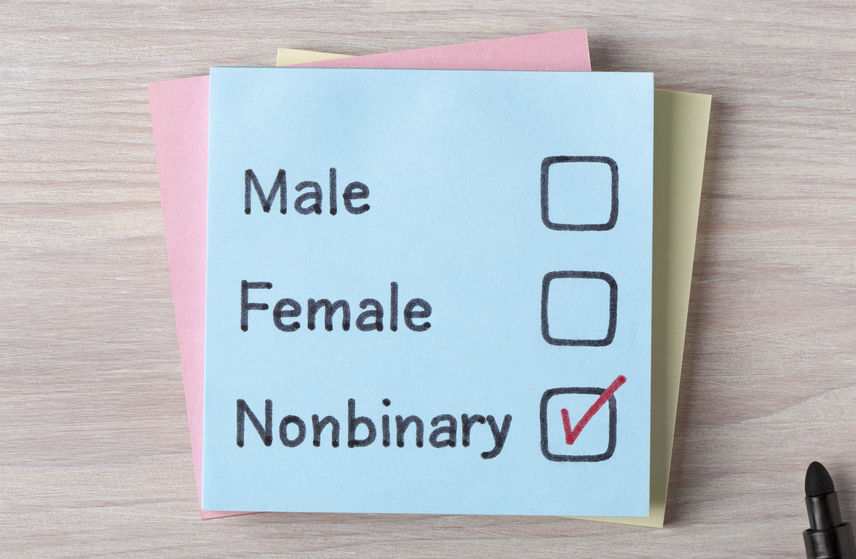The Sexual Fantasies of People With Non-Binary Gender Identities
April 8, 2019 by Justin Lehmiller

I have written quite a bit about similarities and differences in the sexual fantasies of self-identified men and women (see here for a summary). Of course, however, not everyone identifies as male or female. So what do people who have non-binary gender identities (e.g., transgender, bigender, genderqueer) fantasize about? And how are they similar or different to those of self-identified men and women?
In the survey of 4,175 Americans I conducted for my book Tell Me What You Want, 5% of my participants identified as gender non-binary. These data therefore offer a unique opportunity to explore the fantasies of persons with non-binary identities. Here are some of the key things I found (note that the information that follows reflects whether people have *ever* had a given fantasy, not whether it is their favorite or most frequent fantasy):
· Non-binary persons were more likely to have fantasized about certain elements of BDSM compared to self-identified men and women, including bondage, discipline, sadism, and humiliation. They were also the gender group most likely to fantasize about forced sex (68% of non-binary folks had fantasized about this before, compared to 61% of women and 54% of men).
· Non-binary persons were less likely to fantasize about activities such as kissing, mutual masturbation, and oral sex; however, they were more likely to fantasize about receiving anal sex and using sex toys.
· Non-binary persons were the most likely to fantasize about being polyamorous (76% had fantasized about this, compared to 70% of men and 51% of women).
· Non-binary persons had the highest rates of fantasies about becoming someone else. For example, 22% fantasized about being a furry, 28% had fantasies about being an adult baby, and 65% had fantasies about trading bodies with someone else. By contrast, men and women were about half as likely to have fantasized about all of these things.
· Related to this, non-binary persons were also the group that was most likely to change the way they see themselves in general in their sexual fantasies, such as by changing their body type, genital appearance, or personality.
As you can see, some important differences emerged in terms of the types of things non-binary persons fantasized about. So how do we account for these differences?
We need further research to know for sure (and also to look at whether fantasies differ across different non-binary identities), but there are a few possibilities. For example, the fact that non-binary persons had more BDSM fantasies and fantasies about physical transformation may reflect a heightened desire for escape from self-awareness. Likewise, non-binary persons’ greater interest in polyamory and diverse sexual practices may reflect more openness in general to deviating from traditional sexual and relationship scripts.
With all of that said, it’s important to note that, regardless of gender identity, the prevailing themes that appeared in people’s sexual fantasies were pretty similar. In other words, there’s far more that unites us than divides us in our fantasy worlds.
Want to learn more about Sex and Psychology ? Click here for previous articles or follow the blog on Facebook (facebook.com/psychologyofsex), Twitter (@JustinLehmiller), or Reddit (reddit.com/r/psychologyofsex) to receive updates. You can also follow Dr. Lehmiller on YouTube and Instagram.

Dr. Justin Lehmiller
Founder & Owner of Sex and PsychologyDr. Justin Lehmiller is a social psychologist and Research Fellow at The Kinsey Institute. He runs the Sex and Psychology blog and podcast and is author of the popular book Tell Me What You Want. Dr. Lehmiller is an award-winning educator, and a prolific researcher who has published more than 50 academic works.
Read full bio >

